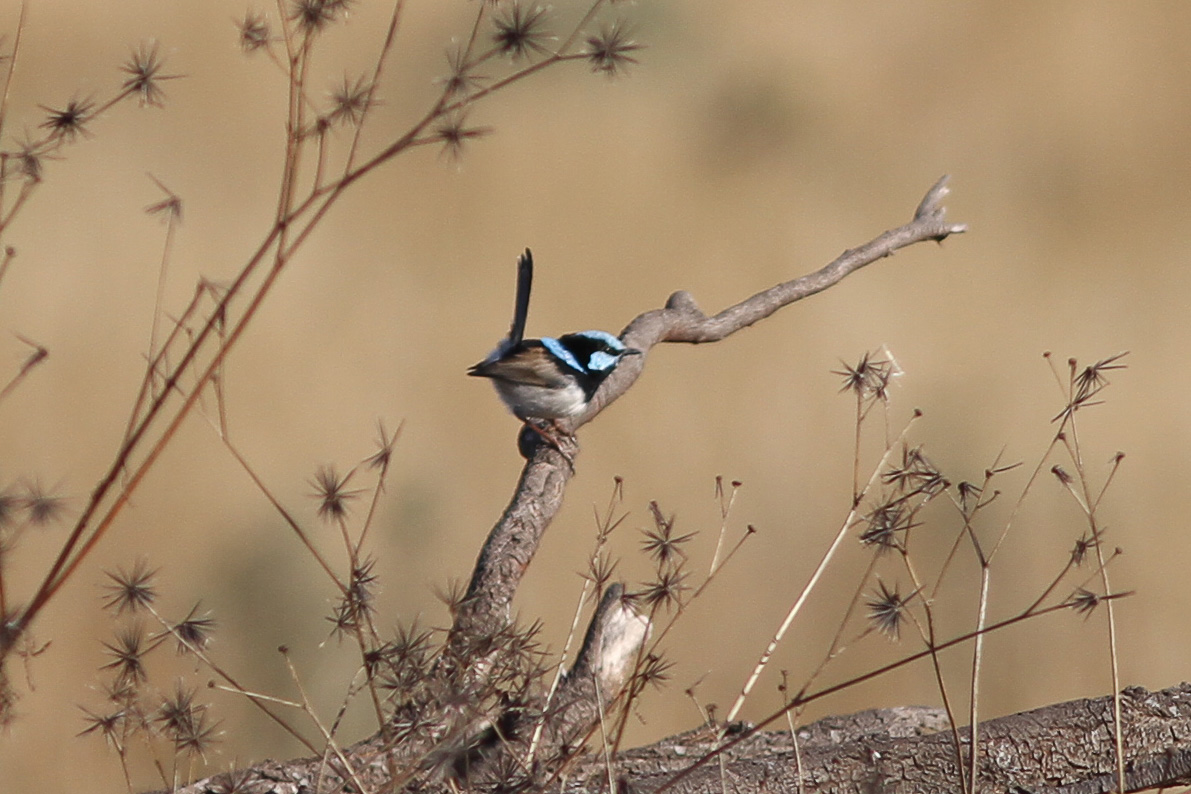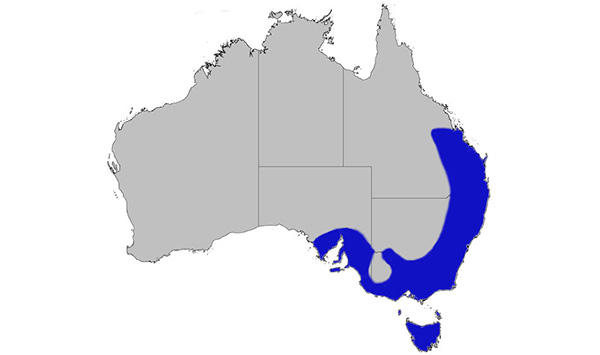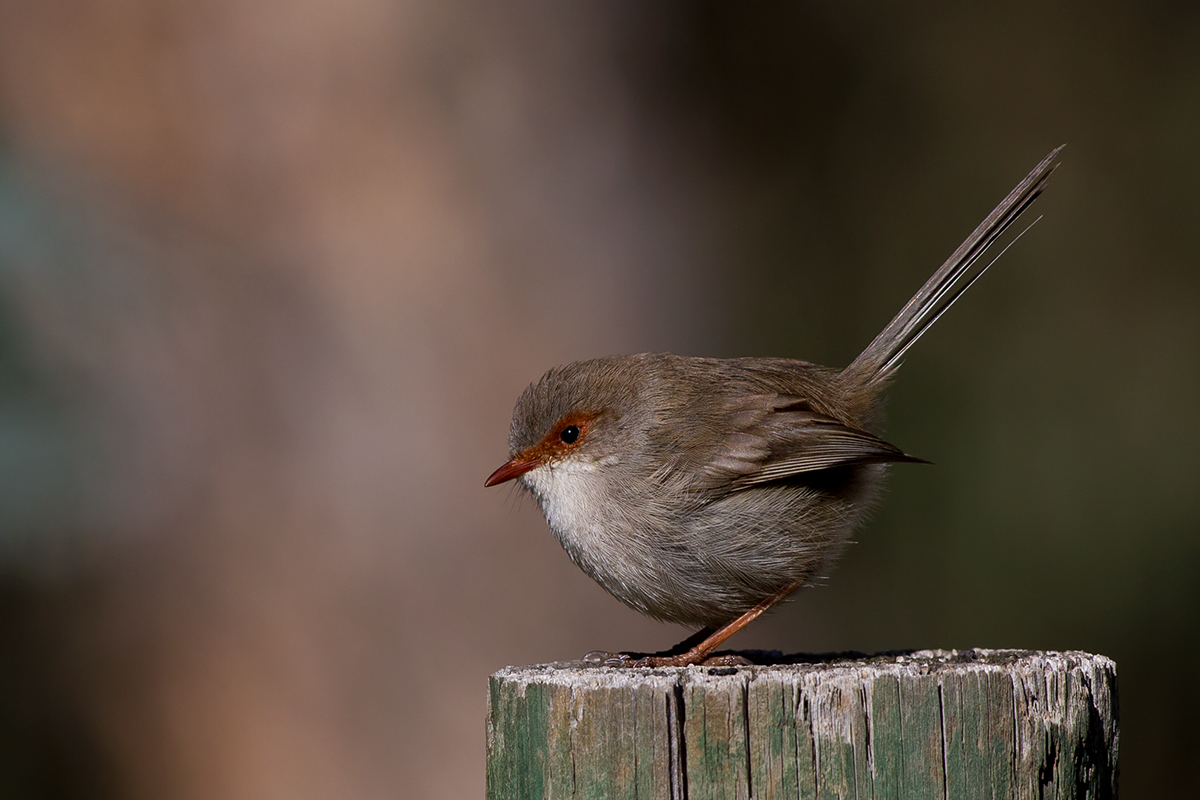Size
14 - 20 cm
Behaviour
Call
The basic song is a 1–4 second high-pitched reel consisting of 10–20 short elements per second sung by both sexes. Males also possess a peculiar song-like vocalization, which is given in response to the calls of predatory birds.
Diet
Feeds on insects and other small arthropods. Feeding takes place in small social groups.
Breeding
September-March. The nest is a dome-shaped structure of grasses and other fine material. It is usually placed in a low bush and is constructed by the female. The female incubates the eggs alone, but both sexes feed the young. Other members of the group will also help with the feeding of the young.
Field Guide
Improve your identification skills. Download your Superb Fairy-Wren field guide here!





